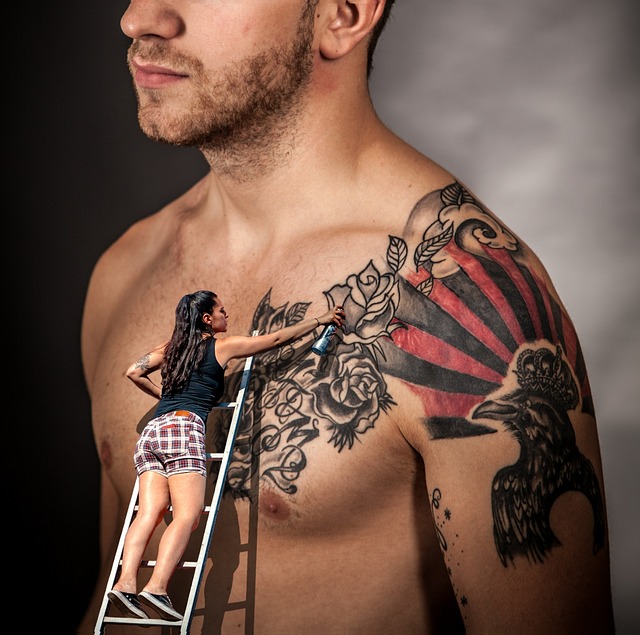Tattoos have always been more than just art on skin—they carry deep emotional and symbolic meanings. Whether you’re considering your first tattoo or adding another piece to your collection, understanding the significance behind the design can help make your ink even more meaningful. From ancient symbols to modern minimalist tattoos, each design tells a story that reflects the wearer’s beliefs, experiences, and aspirations.
1. The Semicolon: A Symbol of Strength and Survival
One of the most powerful tattoo symbols in recent years is the semicolon. Popularized by the mental health movement, it represents the continuation of life despite hardship. It signifies that the story isn’t over—an individual chooses to keep going. Celebrities like Selena Gomez and Demi Lovato have embraced the semicolon tattoo as a reminder of their personal struggles with mental health. This design has become a popular choice for those who’ve overcome challenges and want to carry a visual reminder of their strength.
2. Roses: Love, Beauty, and Passion
The rose tattoo is one of the most enduring designs in tattoo history. Depending on the color and placement, roses can carry a variety of meanings. Traditionally, a red rose symbolizes romantic love, while a white rose often represents innocence or new beginnings. A black rose can indicate mourning or rebirth, while a yellow rose may symbolize friendship. Many people opt for roses as tattoos because of their beauty and universal symbolism, whether as a single flower or in a bouquet intertwined with other elements like thorns or vines.
3. Infinity Symbols: Endless Possibilities
The infinity symbol, a sideways figure-eight, is often chosen by those who believe in limitless possibilities. This symbol represents eternity, continuous love, or the idea that there are no boundaries—whether in a relationship, one’s personal growth, or the universe. The infinity symbol is a common tattoo among couples, signifying endless love, and can also be seen in designs that incorporate birth dates, names, or coordinates to mark a special connection that will last forever.
4. Mandalas: Harmony, Balance, and Spirituality
Originating from Hindu and Buddhist cultures, mandalas are intricate, circular designs that represent the universe, inner peace, and spiritual enlightenment. The word “mandala” means “circle” in Sanskrit, and these tattoos are often used as tools for meditation and reflection. People who choose mandalas as tattoos often seek balance, personal growth, and alignment with their higher self. The complex designs reflect the interconnectedness of life, and each unique mandala can symbolize the wearer’s journey toward inner harmony.
5. Birds: Freedom and Transformation
Bird tattoos are commonly associated with freedom, independence, and the idea of personal transformation. Whether it’s a flock of birds in flight, a single bird, or a swallow tattoo, the imagery of birds soaring through the air represents the desire to break free from limitations. A swallow tattoo specifically is often associated with homecoming or loyalty, as swallows traditionally return to the same place each year. For those who have gone through significant life changes or are embarking on new journeys, bird tattoos provide a powerful symbol of growth and liberation.
6. Anchors: Stability and Hope
Anchor tattoos have a long history, especially within nautical traditions, where they symbolize stability, hope, and a safe return home. For sailors, the anchor was a reminder of their connection to the shore and the promise of returning to loved ones. Today, anchor tattoos continue to represent groundedness and strength. Many people choose anchor tattoos to remind themselves to stay true to their roots, no matter how far they roam in life.
7. Butterflies: Transformation and Rebirth
The butterfly tattoo is a universal symbol of transformation and personal growth. Butterflies go through several stages of metamorphosis, from caterpillar to pupa to butterfly, which reflects personal evolution and the shedding of past limitations. A butterfly tattoo can symbolize freedom, new beginnings, or a spiritual awakening. For some, it marks a moment of change or recovery, making it a perfect design for anyone who has overcome adversity or is embracing a new chapter in life.
8. Skulls: Mortality and Strength
Though often seen as a symbol of death, skull tattoos also embody the idea of embracing life fully in the face of mortality. A skull can symbolize fearlessness and the acceptance of death, often serving as a reminder to live life to the fullest. For some, skull tattoos may also represent strength or the courage to face challenges head-on. These tattoos are often used in designs that include other elements like flowers (to represent life) or roses (signifying beauty in the face of death).

